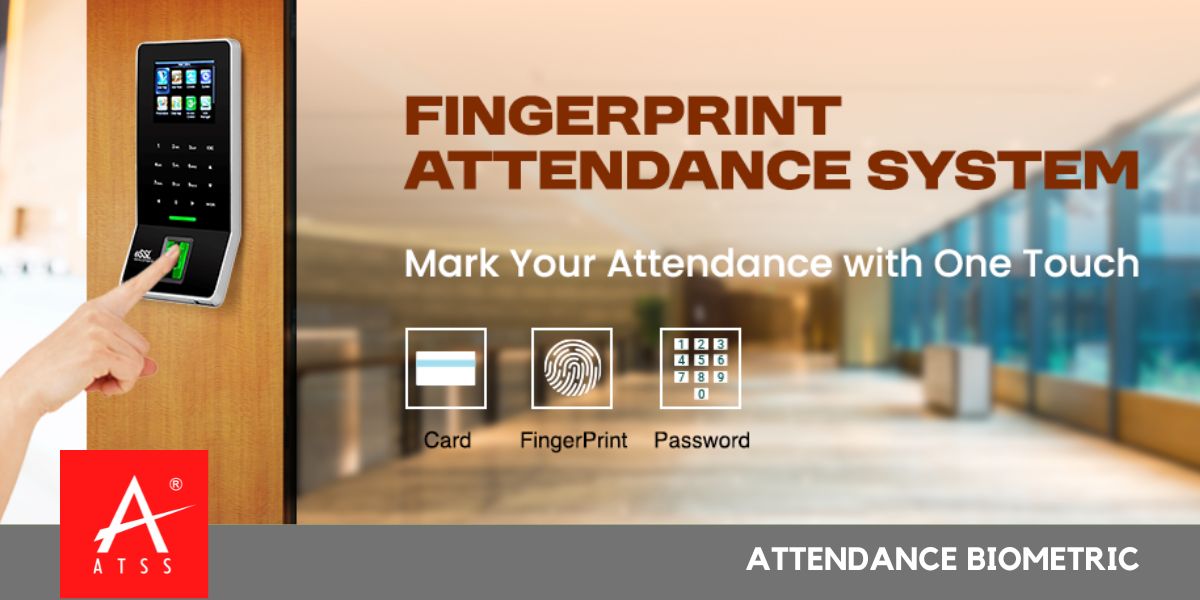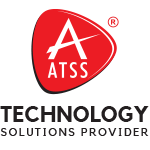
Attendance Biometric
Upgrade workforce management with a biometric attendance machine and system. Track time with secure attendance biometric solutions for your business.
The Ultimate Guide to Attendance Biometric Systems: Everything You Need to Know
Is Your Workplace Still Using Manual Attendance Logs?
Imagine an employee clocking in for their friend. Or HR spending hours correcting time logs. Sounds outdated, right?
Here’s a surprising fact: Companies lose thousands annually due to time theft and attendance fraud. That’s where attendance biometric technology comes in.
This comprehensive guide explains how time attendance systems revolutionize time tracking, reduce fraud, and improve productivity. Whether you’re a startup, school, or enterprise, this guide helps you make the best decision for your workforce.
Central Message: Attendance biometric systems are the future of workforce management—accurate, secure, and efficient.
What is an Attendance Biometric System?
An attendance machine system utilizes biological characteristics—such as fingerprints, facial recognition, or thumbprints—to accurately record employee clock-ins and outs. In contrast to manual registers or swipe cards, biometric attendance effectively eliminates issues like buddy punching and human error.
Common Types of Attendance Biometric Devices:
- Fingerprint attendance machine
- Facial attendance machine
- Thumbprint attendance machine
- Face recognition biometric attendance system
- Multi-modal biometric systems (e.g., combining face and fingerprint)
How Attendance Biometric Systems Work
These systems operate by first relying on biometric scanners that capture and match an employee’s biological trait with pre-stored data. Once the match is confirmed, the biometric attendance software then logs the time. Subsequently, this information is stored in either a local or cloud-based database.
Key Components:
- Biometric scanner for attendance
- Biometric attendance system software
- Cloud/local database for storage
- Connectivity options (Wi-Fi, 4G, LAN)
Top Benefits of Attendance Biometric Technology
✅ 1. Unmatched Accuracy
No more incorrect entries or manual adjustments—biometric systems use unique identifiers that cannot be forged.
✅ 2. Enhanced Security
Face recognition and fingerprint machine systems limit access to authorized users, enhancing workplace security.
✅ 3. Elimination of Buddy Punching
No employee can clock in on behalf of another—biometric punch machines ensure honesty.
✅ 4. Integrated Payroll Processing
Automated data collection feeds directly into HR and payroll systems, reducing errors and saving time.
✅ 5. Long-Term Cost Savings
Although the initial investment may seem high, the long-term return—in terms of reduced fraud and decreased administrative workload—ultimately makes it worthwhile.
Exploring Types of Attendance Biometric Machines
Fingerprint Attendance Machine
- Most affordable and widely used
- Ideal for small to mid-sized businesses
Face Biometric Attendance Machine
- Contactless and hygienic
- Often includes thermal scanning
- Great for healthcare and high-sensitivity environments
Thumbprint Attendance Machine
- Reliable and easy to use
- Suitable for retail and educational institutions
Multi-modal Systems
- Combine face, fingerprint, and card access
- Suitable for enterprises with high security requirements
How to Choose the Right Attendance Machine Device
When investing in a biometric device for attendance, consider the following:
- Number of employees
- Required authentication type
- Indoor vs. outdoor use
- Integration with payroll or HR systems
- Connectivity (Wi-Fi, 4G, USB, LAN)
Popular choices include:
- USB-supported fingerprint punching machine
- AI-powered face reading attendance machine
- Cloud-based systems with app access
Attendance Machine System Price Breakdown
Prices vary by feature set, brand, and security level. Here’s a snapshot of typical price ranges in India:
| Device Type | Estimated Price Range |
|---|---|
| Fingerprint Attendance Machine | ₹7,000 – ₹12,000 |
| Face Attendance Machine | ₹10,000 – ₹20,000 |
| High-End Biometric Face Finger Attendance System | ₹20,000 – ₹50,000 |
Software for Attendance Biometric Systems
Great hardware is incomplete without efficient biometric management system software. Look for features like:
- Real-time reporting
- Leave and shift management
- Payroll integration
- Mobile app access
Cloud-based software is particularly useful for businesses managing remote or multi-site teams.
Use Cases of Biometric Attendance Technology
✅ Educational Institutions
Monitor student and staff attendance accurately.
✅ Corporate Offices
Ensure timely arrivals and automate payroll.
✅ Industrial Units
Manage multiple shifts and high foot traffic.
✅ Hospitals & Clinics
Touchless face attendance machines help maintain hygiene.
✅ Retail Outlets
Quick identification of employees and time tracking.
Installing and Maintaining Your Biometric Attendance System
Installation Checklist:
- Device mounting
- Power and network setup
- Software installation and configuration
- Staff enrollment and training
Maintenance Tips:
- Regularly clean biometric sensors
- Update software periodically
- Backup data weekly (especially for on-premise setups)
Future Trends in Attendance Management System Technology
- AI Integration: Real-time face detection and expression analysis
- Mobile Biometrics: Clock-in via smartphones
- Cloud-first Systems: Seamless access and syncing
- Zero-contact Attendance: Voice and gesture recognition
These innovations will redefine how we manage workforce efficiency.
Final Thoughts
Investing in an attendance machine system is no longer a luxury—it’s a necessity for businesses aiming for transparency and efficiency.
Whether you’re choosing a fingerprint scanner for attendance, facial clocking system, or thumb scanner for attendance, each device adds measurable value.
To begin with, evaluate your organization’s unique needs. Next, compare pricing options, and finally, choose a reliable system that integrates seamlessly with your HR tools.
Let go of spreadsheets and manual logs. Embrace automation, accuracy, and accountability with a powerful attendance biometric system.
FAQs on Biometric Attendance Systems
1. What is the best biometric attendance system?
Top-rated biometric attendance systems include eSSL K30, eSSL K90, K40 Pro, K45 Pro, IN01-A, IN-02A, F-22 Wireless, eSSL X990, and AIFace Magnum. These models feature advanced fingerprint and facial recognition, cloud integration, and real-time reporting for accurate employee tracking.
2. Which biometric machine is best for offices?
For office environments, the eSSL X990 and AIFace Magnum are popular choices. They offer fingerprint, face, and RFID access with fast recognition speeds, ideal for efficient employee time tracking and secure access control.
3. How does biometric attendance work?
Biometric attendance captures unique physical traits such as fingerprints or facial patterns, then matches them with stored data. This process ensures accurate, tamper-proof clock-ins and clock-outs, providing more reliability than manual methods.
4. Can I use fingerprint attendance for my company?
Yes, fingerprint attendance is an effective solution for companies of all sizes. It minimizes buddy punching, streamlines HR reporting, and boosts productivity. Compact, cost-effective models like the eSSL K30 Pro are great options.
5. What’s the price of a biometric attendance machine?
Prices start from around ₹4,500 for basic fingerprint devices and can exceed ₹25,000 for advanced models with facial recognition, Wi-Fi, and cloud features.
6. Biometric attendance system for small business
Small businesses benefit from compact and affordable models like the eSSL K30 Pro or Silkbio 101TC. These are easy to install and offer essential attendance features, including mobile access.
7. Where can I buy a biometric attendance machine near me?
You can purchase biometric attendance machines from local security providers or trusted industry leaders such as ATSS, who offer eSSL and ZK machines.
8. How to install a biometric attendance machine?
Installation typically involves wall-mounting, powering the device, configuring user data, and syncing with attendance software. Professional installation is recommended for network setup and security.
9. Is biometric attendance better than RFID?
Yes, biometric machines is more secure than RFID cards, which can be lost or misused. Biometrics verify unique physical traits, making them ideal for foolproof attendance.
10. Top biometric attendance systems in India
Popular models in India include:
- eSSL K90
- eSSL X990 (Fingerprint + RFID)
- K40 Pro
- AIFace Magnum (Face + Fingerprint)
- F-22 Wireless
- Silkbio 101TC
These are known for durability, security, and smooth integration.
11. Which biometric machine works with face and fingerprint?
The eSSL AIFace Magnum and Silkbio 101TC support both facial and fingerprint recognition, providing dual authentication for high-security needs and touchless verification.
12. Best biometric machine with Wi-Fi and cloud
The eSSL X990 and CP Plus Cloud Biometric series offer Wi-Fi connectivity, cloud storage, and mobile app support, enabling remote monitoring and secure data backup.
13. How to connect attendance machine to mobile app?
Enable Wi-Fi or LAN on the device, install a compatible app (e.g., eTimeTrackLite, BioTime, CP Plus Track), and sync using the device ID or IP address. Ensure your machine supports cloud features.
14. Can biometric attendance work without internet?
Yes, most machines store attendance data offline and sync once online. However, real-time reports and remote access require internet connectivity.
15. Affordable fingerprint attendance machine for schools
Schools can choose budget-friendly models like eSSL K30 Pro or Silkbio-101TC, priced under ₹8,000. They provide reliable attendance with SMS alerts and reporting for parents and administrators.
16. Do biometric attendance systems have GPS?
Advanced models and mobile attendance apps may include GPS tracking. Standalone biometric devices usually do not have GPS but can integrate with location-aware mobile systems.
17. How to maintain a biometric attendance system?
Maintenance involves cleaning fingerprint sensors regularly, updating firmware, backing up data, and checking connectivity. Professional servicing every few months helps maintain peak performance.
18. What is the monthly cost of attendance software?
Attendance software subscriptions typically cost between ₹300 and ₹1,000 per month per device, depending on features like cloud storage, analytics, app access, and HR/payroll integration.
19. Is biometric attendance safe and secure?
Yes, biometric attendance systems use encrypted biometric templates—not actual images—ensuring privacy and protecting against spoofing attempts.
20. Which biometric system supports Aadhaar integration?
Aadhaar-enabled biometric attendance systems (AEBAS) by Realtime and Mantra are government-approved. They verify identities using UIDAI authentication services for official compliance.
Facial Recognition System | ESSL Software | Essl Biometric | ESSL Authorised Distributor | eTimeTrackLite

